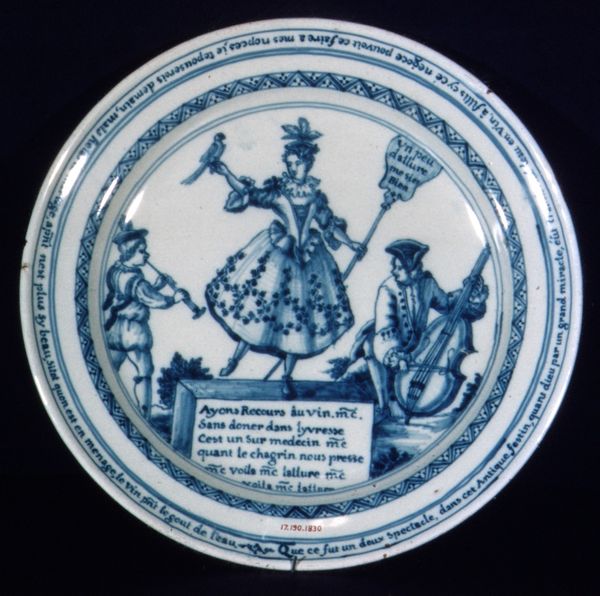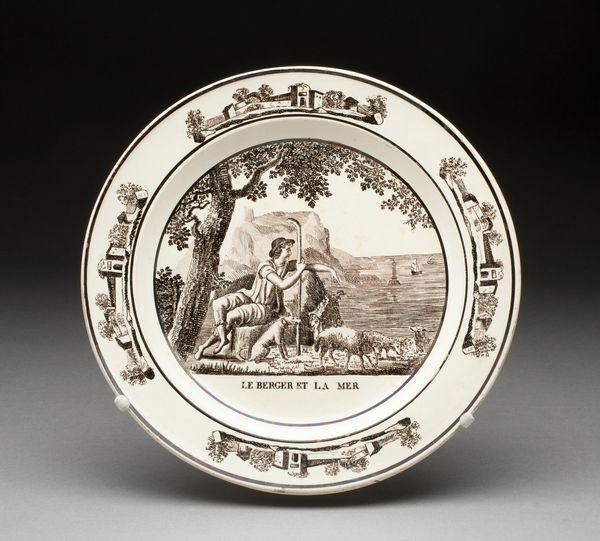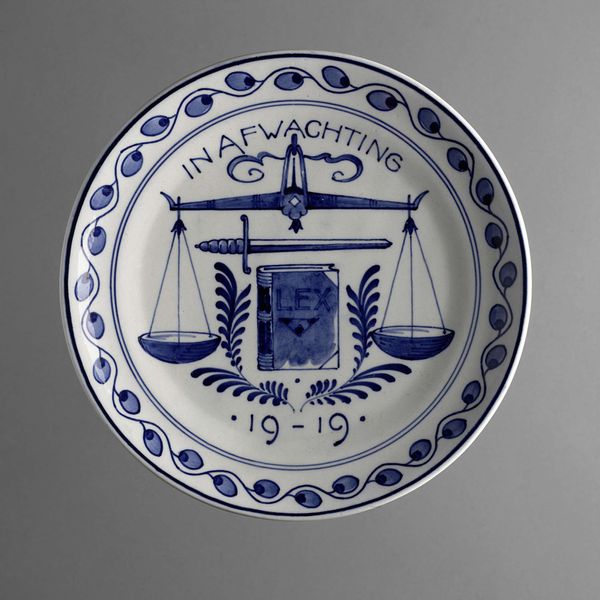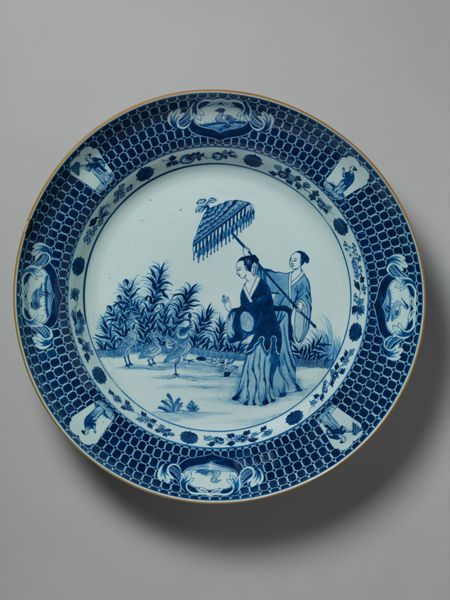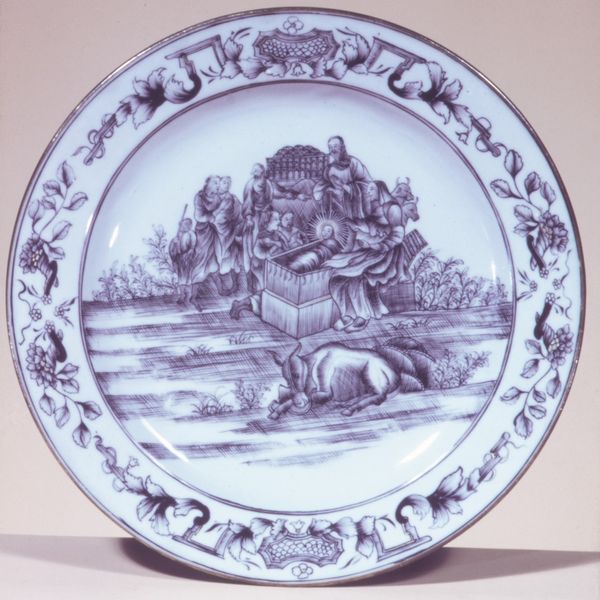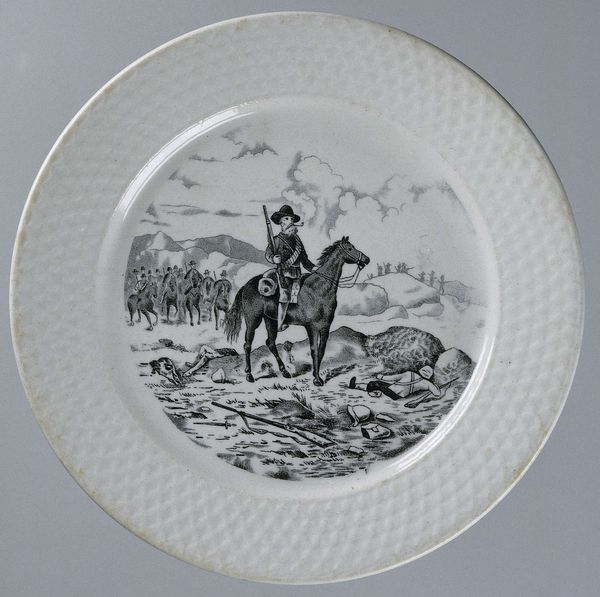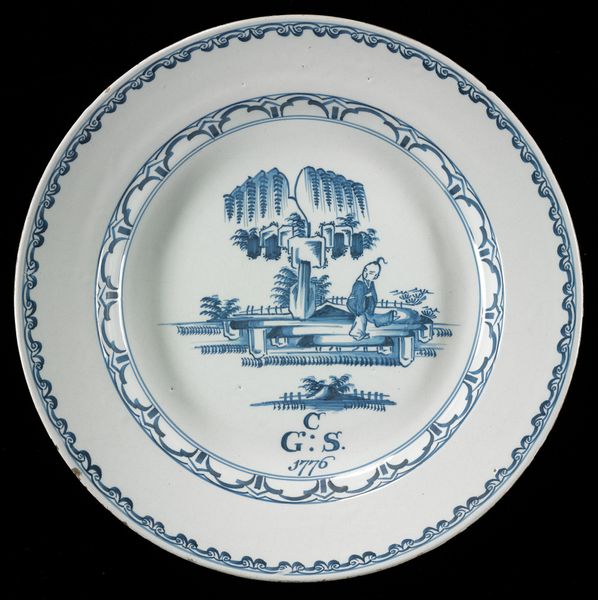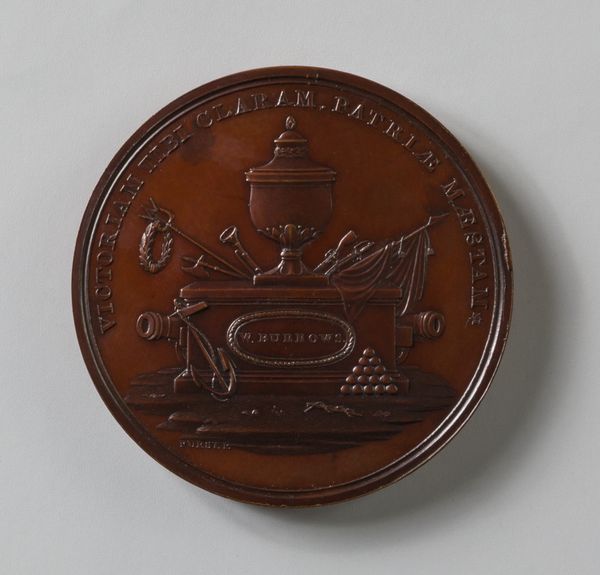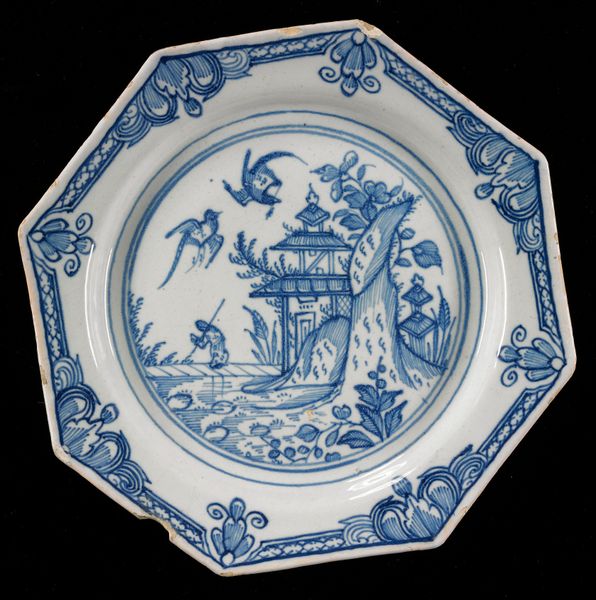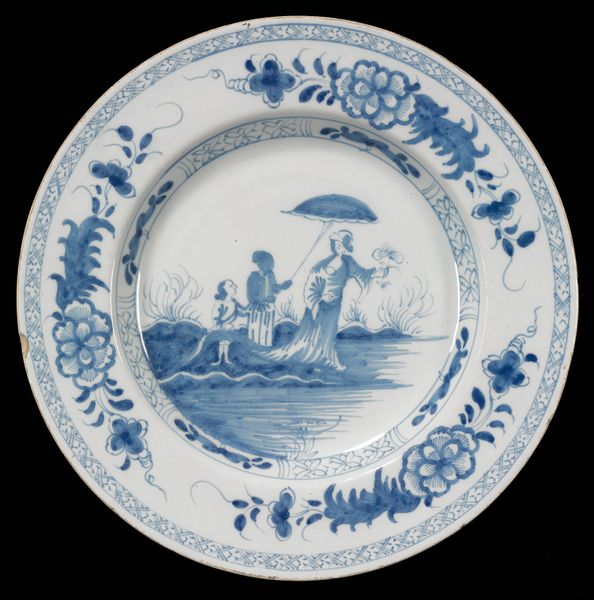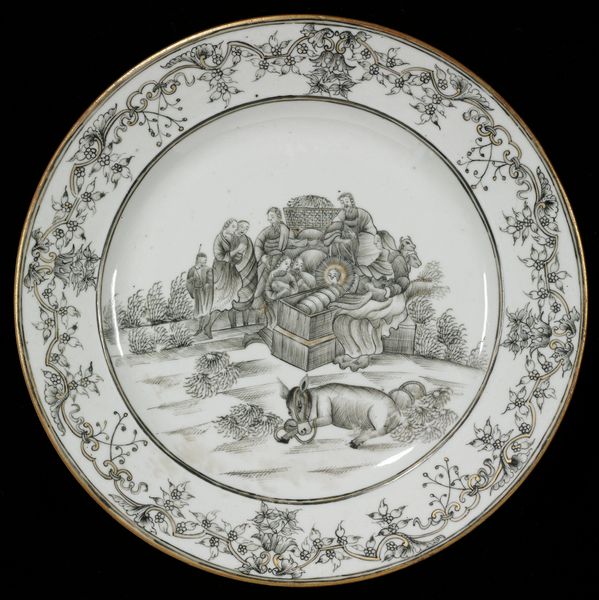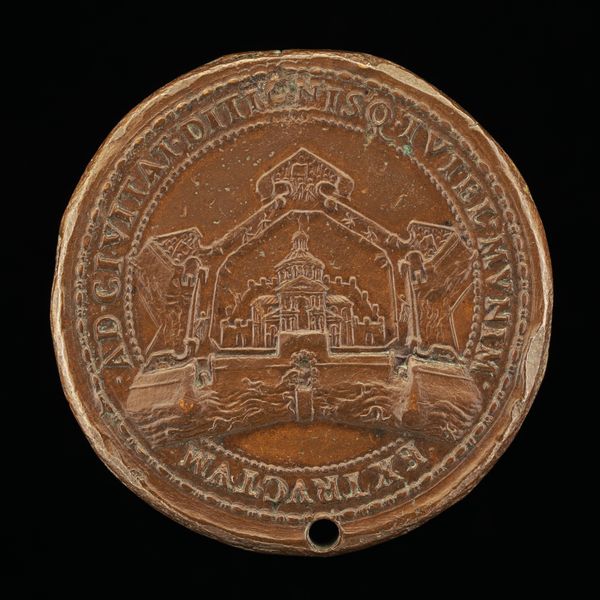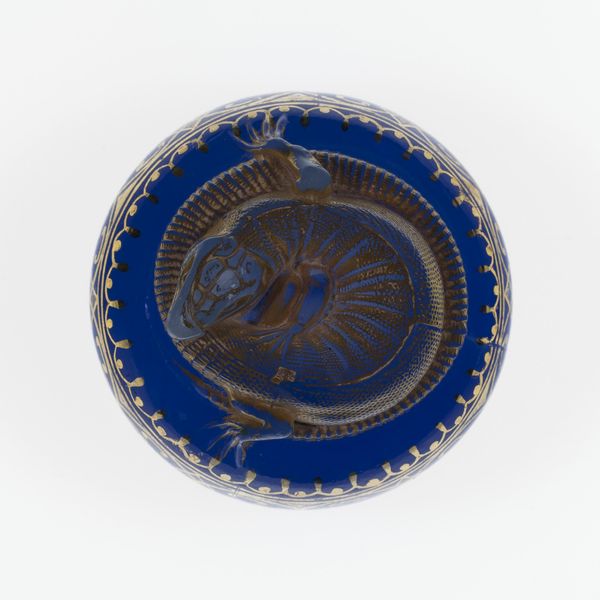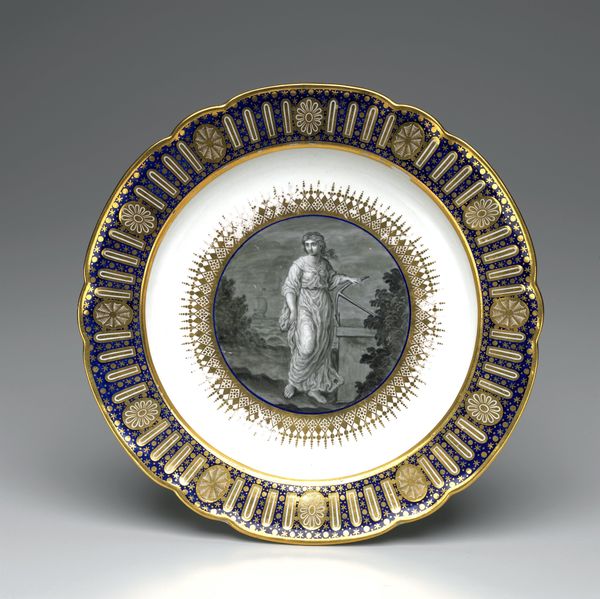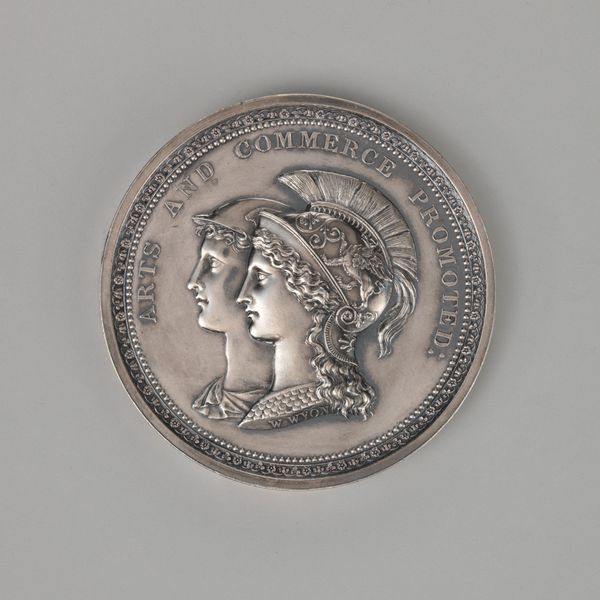
print, ceramic, earthenware
#
cold feature colours
# print
#
landscape
#
ceramic
#
retro 'vintage design
#
figuration
#
earthenware
#
cityscape
#
history-painting
Dimensions: height 3.3 cm, diameter 23.2 cm
Copyright: Rijks Museum: Open Domain
Editor: So, this piece is a ceramic plate titled "Herrijzend Nederland," which roughly translates to "Netherlands Rising" made sometime between 1945 and 1950. It seems to be a commemorative work. What jumps out is the contrast between the heroic imagery and...well, what seems to be a swastika on the bottom half. What do you make of this odd combination? Curator: It's a powerful, if unsettling, example of postwar sentiment. Notice how the imagery invokes a historical "Dutch" hero atop a horse as well as flags of different countries in support of Netherlands and how they contrast with a Swastika sign under the hooves of the horse.. Consider the socio-political context: the Netherlands had just been liberated from Nazi occupation. How would that national trauma and yearning for a return to pre-war glory manifest in art? Editor: It’s strange seeing the plates evoke both those national sentiments and yet, so shortly after the war. Is the intention to condemn that era or perhaps, a misguided call to "rise again" in a more nationalist way? Curator: The presence of that symbol isn’t a suggestion, but more like a graphic indicator to see what obstacles the nation needed to 'rise' from and why allies support mattered in achieving it. It reminds us that public art often carries complex, even contradictory messages, especially in the wake of conflict. Do you notice anything else within the image? Editor: The flags around the borders suggest allied nations helping to rebuild, right? And the rising sun… maybe symbolizes a new beginning after a dark period. Curator: Exactly! And think about the intended audience: Who would have purchased and displayed such a plate? How might their understanding of "rising Netherlands" differ? Editor: So it's less about what the artist intended and more about how it functioned in Dutch society after the war, as a statement and conversation piece. That makes a lot of sense. Curator: Precisely! It’s a visual document reflecting a nation grappling with its identity and future after immense upheaval. And what a deceptively complex image on a simple plate! Editor: Definitely. I hadn't thought about all the layers of historical meaning embedded in something seemingly decorative. Thanks for unpacking that.
Comments
No comments
Be the first to comment and join the conversation on the ultimate creative platform.
